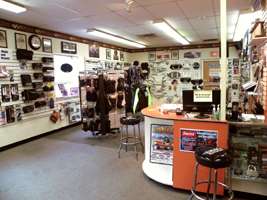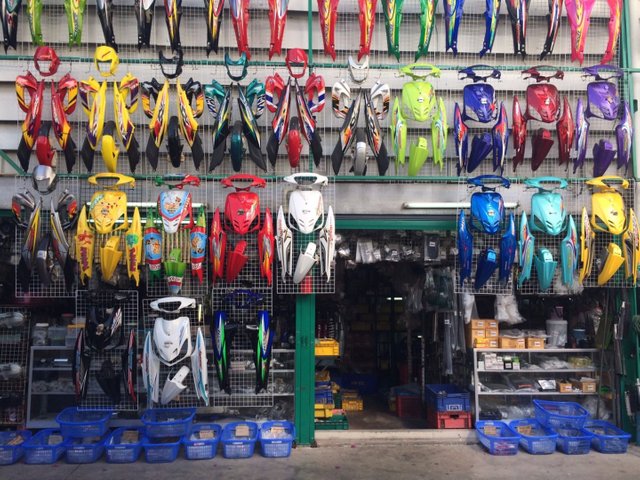Discover Top Quality Moto Parts NZ for All Your Motorcycle Requirements
Discover Top Quality Moto Parts NZ for All Your Motorcycle Requirements
Blog Article
Understanding the Crucial Parts of a Bike: A Comprehensive Overview for Enthusiasts
For bike fanatics wanting to boost their riding experience and ensure their bikes run efficiently, understanding the vital parts of a motorcycle is critical. Each component, from the engine's elaborate functions to the critical role of the braking systems, not only impacts performance but likewise safety and convenience. This guide will walk with the fundamental components that every cyclist ought to be familiar with, enabling informed selections in both upkeep and potential upgrades. As we begin this exploration, one must ask: just how does each part communicate to create the smooth experience every lover looks for?
Engine Elements

The camshaft plays a vital function in controlling the timing of the engine's shutoffs, making certain the specific opening and closing necessary for effective gas and air consumption, as well as exhaust expulsion. This timing is important to preserving optimal engine performance and efficiency. Furthermore, the carburetor or fuel shot system, depending on the motorbike version, is accountable for blending air with gas in the appropriate proportion for burning.
The air conditioning system, either air or liquid-based, works to keep the engine's temperature within functional limitations, avoiding getting too hot and ensuring longevity - motorcycle parts nz. Each component, diligently designed and integrated, adds to the smooth procedure of the engine, specifying the motorcycle's power output and overall performance
Transmission System
Important to the motorbike's capability, the transmission system makes certain effective power transfer from the engine to the wheels. This system makes up a number of essential parts, including the clutch, gearbox, and last drive, each playing an important function in translating the engine's power right into movement. The clutch, normally operated by a hand bar, serves to engage and disengage the engine from the transmission, permitting smooth gear modifications and regulated velocity.
The transmission, commonly referred to as the transmission correct, has a collection of equipments that riders can manually shift through to readjust the bike's speed and torque output. These gears are prepared in a series that makes it possible for the bike to accelerate smoothly and maintain optimal engine efficiency throughout numerous speeds. The majority of motorcycles use a consecutive gearbox, calling for the rider to change gears in an established order.
Braking Mechanisms
While understanding the transmission system is essential to using a motorbike's power, similarly important is the capacity to control and quit that power properly, which is where braking systems enter into play. Brakes are critical for security and performance, giving the rider with the essential control to browse numerous terrains and conditions. Commonly, motorcycles include 2 sorts of braking systems: disc brakes and drum brakes.
Disc brakes are extra prevalent in contemporary motorbikes as a result of their exceptional performance. They include a brake disc, caliper, and pads. When triggered, the caliper presses the brake pads against the spinning disc, transforming kinetic energy into warm, thus slowing down the wheel. This system offers better warm dissipation, regular performance, and enhanced stopping power, especially in damp problems.
Alternatively, drum brakes, though less common, are still discovered in some bikes. They function by pushing brake shoes versus the internal surface of a drum attached to the wheel. While usually less reliable in warm dissipation and quiting power, drum brakes are simpler and a lot more cost-effective.
Understanding these braking systems' nuances allows cyclists to preserve their motorbikes effectively and value the design that makes sure reliable and risk-free quiting.
Suspension and Steering
Suspension and steering systems are essential motorcycle saddlebags components that substantially influence a bike's handling and adventure comfort. The suspension system, being composed of forks at the front and shock absorbers at the rear, takes in road irregularities, boosting security and control. Front forks, typically telescopic or upside down, compress and rebound to mitigate effects, while back shock absorbers maintain tire contact with the road, essential for traction and safety and security.
Steering, focused around the handlebars, connects the cyclist to the bike's directional control. The steering head bearings make sure smooth procedure, enabling exact ability to move. Proper alignment and maintenance of these bearings are important for predictable guiding feedback and reducing biker fatigue.
The suspension's adjustability is another essential element; preload, damping, and rebound setups allow customization to match numerous riding problems and designs. This versatility is necessary for optimizing performance, whether navigating urban roads or tackling rugged trails. Technologies like electronic suspension systems use real-time modifications, improving experience top quality throughout diverse surfaces.

Electrical Equipments
After making certain a smooth and controlled ride with effective suspension and steering systems, interest turns to the electric systems, a critical aspect of contemporary motorcycles. These systems play an important role not only in starting the engine but also in powering numerous components that improve the functionality and safety of the motorbike.
At the heart of a this hyperlink motorcycle's electric system is the battery, which shops electric power needed for starting the engine and powering complementary systems - motorbike shop. The generator or generator, combined with the rectifier-regulator, makes sure the battery stays billed while the motorbike is in procedure, transforming mechanical power right into electric power and keeping voltage degrees
The ignition system, another important part, is in charge of firing up the air-fuel mix in the engine's cyndrical tubes. Modern motorbikes usually utilize a digital ignition system, providing greater performance and integrity contrasted to traditional systems.
Illumination systems, including headlights, tail lights, and signs, are additionally essential, ensuring presence and security for the motorcyclist. Added electronic components such as sensing units, control devices, and shows add to advanced features like gas shot administration, anti-lock braking systems (ABDOMINAL MUSCLE), and electronic dashboards, further enhancing the riding experience.
Final Thought
An extensive understanding of a motorbike's vital components, consisting of the engine, transmission system, stopping devices, suspension, guiding, and electric systems, is essential for lovers intending to maximize comfort, safety and security, and efficiency. Mastery of these elements allows for educated decisions pertaining to maintenance and upgrades, inevitably enhancing the riding experience. By integrating this understanding, cyclists can ensure their motorbikes operate at peak efficiency and integrity, therefore optimizing both satisfaction and long life of their lorries.
For motorcycle fanatics looking to raise their riding experience and ensure their bikes run efficiently, comprehending the crucial components of a bike is paramount.Essential to the motorcycle's performance, the transmission system ensures reliable power transfer from the engine to the wheels.While comprehending the transmission system is essential to taking advantage of a bike's power, just as important is the moved here ability to regulate and stop that power efficiently, which is where braking systems come right into play. Commonly, motorcycles feature 2 kinds of stopping systems: disc brakes and drum brakes.
A detailed comprehension of a bike's vital parts, consisting of the engine, transmission system, stopping devices, suspension, steering, and electrical systems, is indispensable for lovers intending to enhance safety and security, performance, and convenience.
Report this page